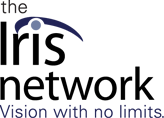May 29, 2012
American Council of the Blind Applauds U.S. Senate for Including Accessible Prescription Drug Labeling Legislation in User Fee Authorization
ARLINGTON, Va., May 24, 2012 – Today blind and visually impaired citizens came one step closer to gaining independent and private access to the information contained on their prescription drug labels as the United States Senate passed S.3187, the Food and Drug Administration Safety and Innovation Act.
“Knowing what medication you are taking and the quantity is something that most individuals without vision loss take for granted,” said Mitch Pomerantz, president of the American Council of the Blind. “We are grateful that the Senate, through the staunch leadership of Senators Tom Harkin (D-Iowa) and Mike Enzi (R-Wyo.), has passed legislation that will allow for a greater level of privacy and independence for blind and visually impaired Americans of all ages who take prescription medications.”
More than 21.5 million Americans experience vision loss that renders them unable to read prescription drug labels or other medication information independently. With the incidence of vision loss expected to increase with the rapidly aging American population, the consequences of being unable to read prescription information pose a significant public health challenge. People who are blind or visually impaired can mistakenly consume the wrong medication, the incorrect dose, or an expired drug because they are unable to read the label or to distinguish between medicine containers. Some patients have reported being victims of pharmacy errors due to the inability to verify the accuracy of a prescription label. Many with vision loss are forced to become dependent either on sighted companions, pharmacists, or even complete strangers to read them their prescription information.
Description of the Legislation
Under S.3187, representatives of the blind and aging communities along with pharmacies and the U.S. Access Board will convene a working group. This group will establish best practices for pharmacies to ensure that people who are blind or visually impaired have access to prescription drug labeling. The group’s recommendations would provide guidance to pharmacists on actions they can take to ensure that the blind or visually impaired understand the information on their prescription and to enable independent access to that information.
The guidelines will provide pharmacies a range of options they can choose to offer consumers, as well as allow additional flexibility for smaller pharmacies. Many of these options are low-cost, widely available, and compatible with equipment already in pharmacies.
The working group would consider options including but not limited to:
Enhanced visual aids such as large-print font, sans-serif font, and high-contrast printing;
Non-visual aids such as braille, and;
Auditory aids such as digital voice recorders attached to pill bottles, “talking bottles” that provide audible label information, and Radio Frequency Identification (RFID) tags or auxiliary smart labels, which are programmed, printed, and affixed to a prescription label container by a pharmacist. These labels can then be accessed by the consumer privately and independently, using a hand-held device that reads out the label information.
After pharmacies have had the opportunity to adopt the guidelines, the Government Accountability Office (GAO) will review the degree to which pharmacies are in compliance. They will examine whether the blind or visually impaired still lack safe and independent access to prescription drug labeling and issue a report to Congress on the remaining gaps and the scope of the problem.
